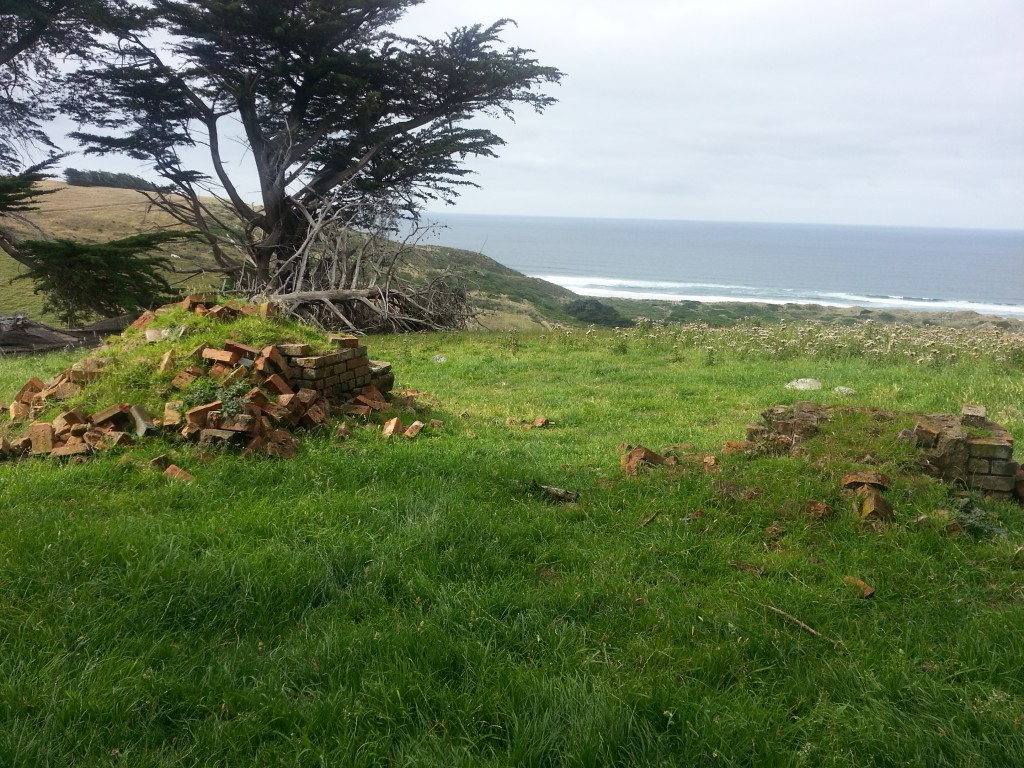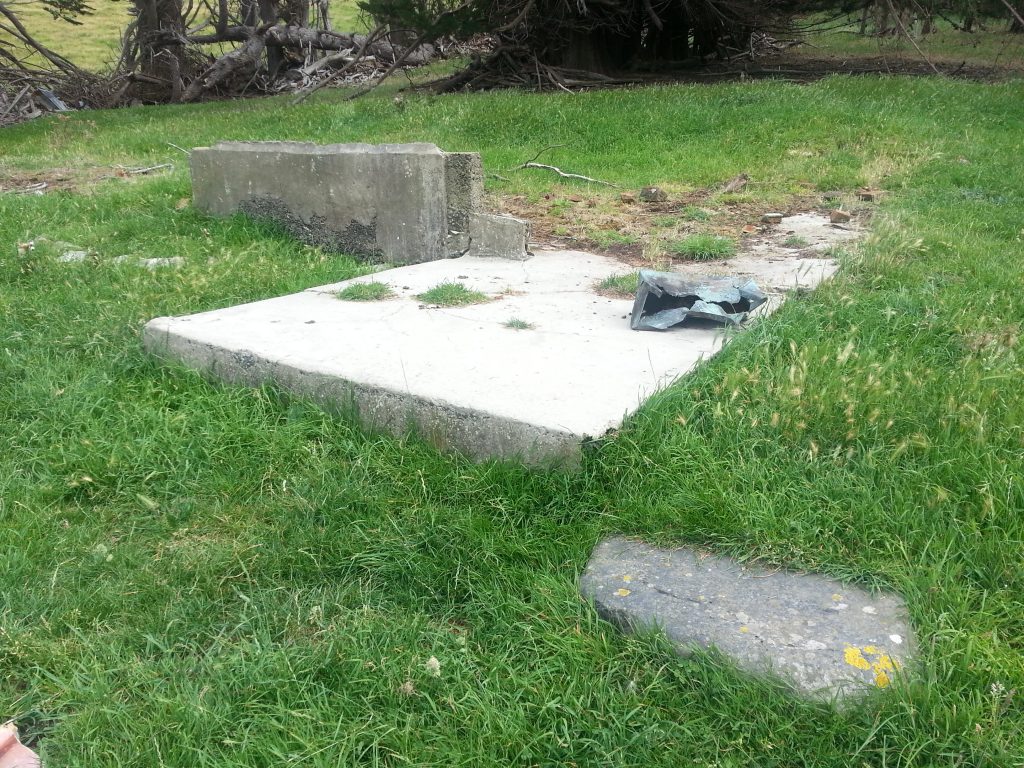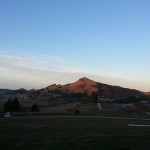Well, this is embarrassing. Back in March I promised this post “soon”, but then I got distracted with all the other adventures I was having. Still, better late than never! In Part One (linked above) we started our way down the Paradise Track, stopping to check out the ruined remains of a hotel and then the old Sanderson farm, leading us to reflect in turn on the First World War and the great flu epidemic of 1918. In this post, we continue our journey on a mission to find the farm that gave the track its name.
 The path took us down a narrow gap between two rows of flax bushes, occasionally forcing us to push through encroaching leaves. Coming upon a row of macrocarpas next to the track, we startled a flock of sheep resting beneath who fled from the terrifying sight of two wandering Dunedinites. I kept a look out to the left to see if I could locate any sign of the homestead I knew had once been here.
The path took us down a narrow gap between two rows of flax bushes, occasionally forcing us to push through encroaching leaves. Coming upon a row of macrocarpas next to the track, we startled a flock of sheep resting beneath who fled from the terrifying sight of two wandering Dunedinites. I kept a look out to the left to see if I could locate any sign of the homestead I knew had once been here.

Seeing that the trees had been planted in a vague oblong pattern, we felt certain that this must be the place, so we hopped the fence and investigated. There wasn’t much evidence of the old homestead, until we stumbled upon a couple of piles of bricks partially covered by the grass.

The first mention I can find of this farm is when it was purchased by John Mathieson, a Scotsman who arrived in Dunedin aboard the Jura in 1858 with his wife Catherine and three children. The family first leased some land at Grants Braes, farming cattle and selling butter and cheese made by Catherine, until they were able to purchase their own land. They purchased two blocks of land, one of them being “Paradise Farm”, although it seems their official abode was “Springfield”, which may have been sited up the hill on the other side of Highcliff Rd.
While occupying these farms, John Mathieson had the idea to go into sheep farming and sold his dairy herd to replace them with sheep. This ill-fated experiment lasted three years before it was abandoned and the defeated John began to build his dairy herd anew. Interesting that these days the sheep are back, and apparently thriving much better!

Come 1882 John decided to sell the Paradise Farm block, described at the time as sheltered, containing “beautiful nooks of native bush” and a “never-failing stream”. The dwelling house had five rooms and there was a dairy and byre fit for forty cows.
So now we turn to Thomas Lee and his wife Mary, English immigrants who arrived in Dunedin with six children in 1880 aboard the City of Sparta. In England Thomas had been a farm labourer, now he became a land owner, also purchasing a farm in Allanton. Eventually they relocated to a farm in Goodwood, which the Lee family is still farming today.

Besides the foundation and the collapsed brick chimneys (with pieces of range), there were a few piles of old timber and other scattered building materials. On the slope below the ruin, a remnant of a dry stone wall runs down towards the ocean, perhaps built by John Mathieson’s own hands as he was famous for the quality of his stone walling.

Down past the wall, the grassy slope yields to the dunes of Boulder Beach and finally to the moody grey ocean. You can see why this place might be called paradise, as on a good day the view would be incomparable and the surroundings idyllic. Sadly the only beings left to enjoy it are the sheep who crop the grass around the ruins, and I doubt they care much for the aesthetics of the location.
After poking around the place and admiring the view, we decided it was time to make our way back up the hill for lunch. Leaving Paradise Farm, we braved the tunnel of flax, passed the empty Sanderson residence and saluted the crumbling Highcliff Hotel. Having seen paradise, it was back into the real world for us.
References:
CHATS WITH THE FARMERS. Otago Witness, Issue 1395, 24 August 1878
Shipping News. Otago Witness, Issue 356, 25 September 1858
Page 3 Advertisements Column 5 Evening Star, Issue 5992, 26 May 1882
ARRIVALS AND DEPARTURES FOR THE WEEK. ARRIVALS Otago Witness, Issue 1504, 11 September 1880
1871 UK Census
Family celebrates a hundred years of Lee way by John Lewis




Great story and photos
Hope theres a part three as I’m interested in the Beattie farm. Enjoying the articles thankyou.
I have a Beattie article in the works now!
Looking forward to it my Grt Grt Grandparents were the Beatties Margaret and James
See here! https://adventure.nunn.nz/2017/06/30/to-beatties-and-boulder-beach/
can i go there?
your information is very useful